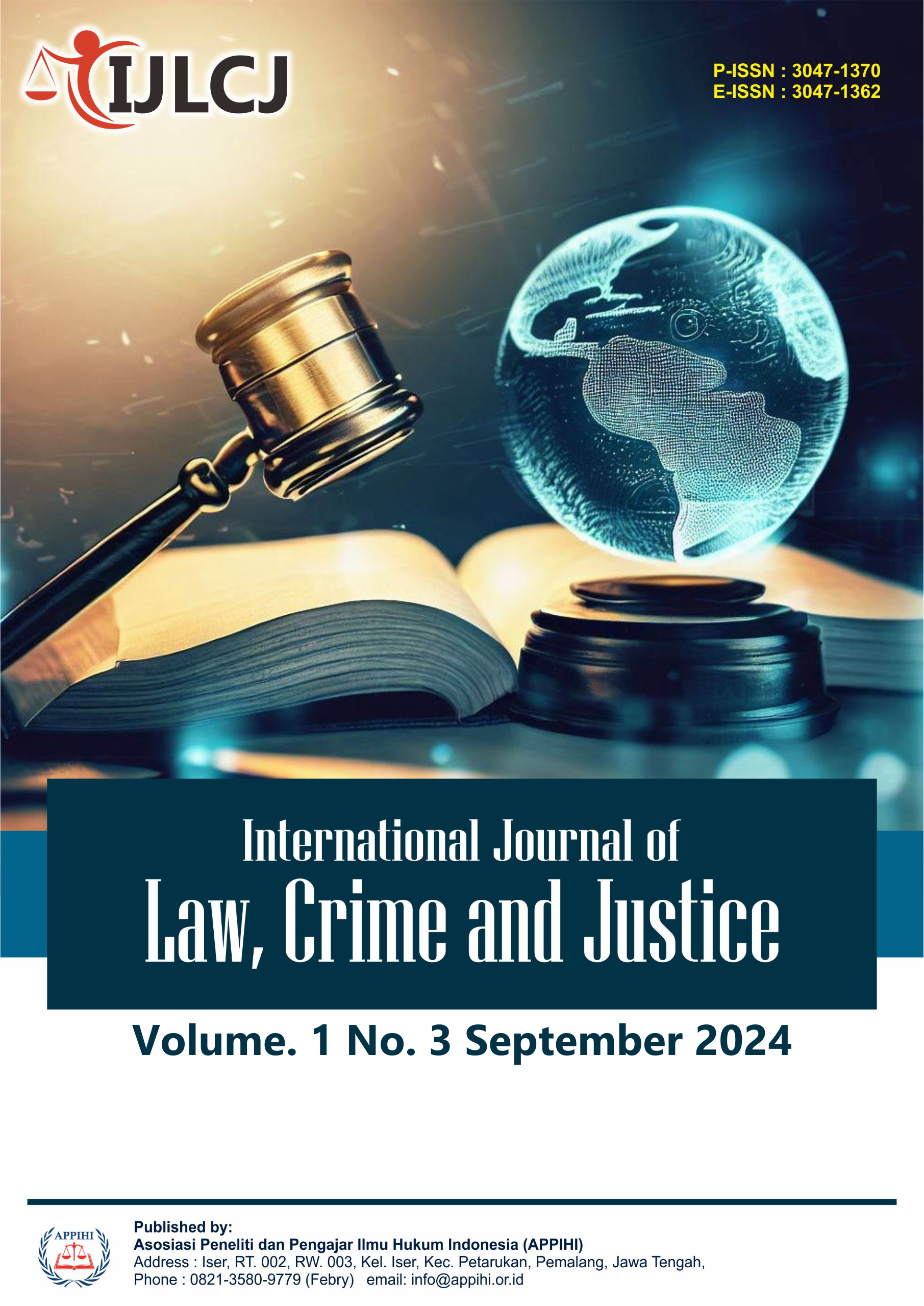The Concept of Implementing Restorative Justice in Relation to the Principle of Ultimum Remedium
DOI:
https://doi.org/10.62951/ijlcj.v1i3.142Keywords:
Restorative Justice, Ultimum Remedium, Child Criminal Acts.Abstract
Children are the future generation of the nation that must be protected, especially when dealing with the law. The difficult navigation route passed by children who are suspects of criminal acts has depicted sadness in children that can disturb the child's mental state, in order to avoid this possibility, another method has emerged in child criminal acts, namely restorative justice (diversion) which is in accordance with the principle of ultimum remedy in criminal law. This study aims to understand the concept of implementing restorative justice which is associated with the principle of ultimum remedy, where this study works using qualitative methods and is sorted in descriptive, so that concrete solutions can be found regarding the matter being studied. The results of this study found a match between the concept of restorative justice and the principle in criminal law, namely ultimum remedy where criminal witnesses are the last step in handling child criminal acts. However, in its application, several obstacles were found, one of which was due to the different meanings of justice between the parties.
Downloads
References
Amirudin, & Zainal Asikin, H. (2016). Introduction to legal research methods (Revised ed.). PT Raja Grafindo.
Anita Zulfiani. (2023). Restorative justice and child criminal justice. Journal of Research Domain, 3(4).
Arief, H. (2018). Application of restorative justice principles in the criminal justice system in Indonesia. Al'Adl Journal.
Januarsyah, M. P. Z. (2011). Application of the principle of ultimum remedium in corruption crimes. Journal of the Bandung College of Law.
Kordi, M. G. H. (2015). Disobedience to children: Reflections on children's rights and protection. Pustaka Baru Press.
Makarao, M. T., Bukamo, W., & Azri, S. (2013). Child protection law and the elimination of domestic violence. Rineka Cipta.
Rahmawati, N. A. (2013). Indonesian criminal law: Ultimum remedium or primum remedium. Recidive Journal, 2(1), Faculty of Law, Sebelas Maret University.
Mozin, N., & Saragih, Y. M. (2021). The role of the PPA unit in applying restorative justice theory to the crime of theft against child offenders in Gorontalo. Journal of Social Economics and Humanities.
Pradila, S., & Saragih, Y. M. (2023). Juridical analysis of children as perpetrators of traffic violations that cause accidents and casualties. Journal of Social Science Research, 3(4).
Chandra, S. (2014). Legal politics of adopting restorative justice in criminal law reform. Faculty of Law, Muhammadiyah University.
Hasibuan, S. A., Saragih, Y. M., et al. (2019). Model of implementing restorative justice in child crime at the investigation level. Seminar Journal of Social Sciences Engineering & Humanities.
Saragih, Y. M., & Lubis, M. R. (2013). Development of the concept of restorative justice in Indonesian criminal law. CV. Dewa Publishing.
Downloads
Published
How to Cite
Issue
Section
License
Copyright (c) 2024 International Journal of Law, Crime and Justice

This work is licensed under a Creative Commons Attribution-ShareAlike 4.0 International License.





